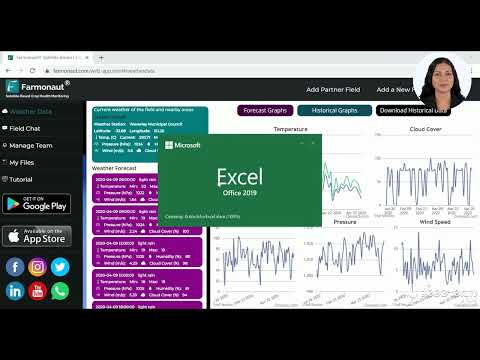Ohio Alfalfa Growers: Master Potato Leafhopper Control with Expert Scouting Techniques
“Potato leafhoppers can reduce alfalfa yield by up to 30% if left unchecked, highlighting the importance of effective pest management.”
Welcome, Ohio alfalfa growers! Today, we’re diving deep into a critical challenge facing our Buckeye State’s alfalfa fields: the persistent threat of potato leafhoppers. As we explore expert scouting techniques and cutting-edge pest management strategies, we’ll equip you with the knowledge to protect your crops and maximize your yield potential.
Understanding the Potato Leafhopper Threat in Ohio
Potato leafhoppers are tiny but formidable foes for alfalfa growers across Ohio. These minuscule insects migrate northward with storm fronts from Gulf states each spring, potentially wreaking havoc on our alfalfa crops. Let’s delve into why these pests pose such a significant threat and how we can effectively combat them.
The Journey North: Storm Front Pest Migration
Every year, as warm spring winds blow from the Gulf Coast, they carry with them an unwelcome passenger: the potato leafhopper. These insects hitch a ride on storm fronts, traveling hundreds of miles to reach our Ohio alfalfa fields. This annual migration pattern means that vigilance is key for Buckeye State farmers.
- Potato leafhoppers typically arrive in Ohio between late May and early June
- They can quickly establish populations in alfalfa fields if left unchecked
- The insects prefer warm, dry weather conditions, which can exacerbate their impact
The Impact on Alfalfa Crops
Once potato leafhoppers settle into our fields, they begin feeding on alfalfa plants, causing a condition known as “hopper burn.” This damage can have severe consequences for both yield and nutritional value of the crop.
- Hopper burn appears as yellowing on leaf tips, progressing to a V-shaped yellowing pattern
- Stunted plant growth reduces overall yield potential
- Nutritional value of the hay crop can be significantly diminished
- Economic losses can be substantial if proper management techniques are not employed
Given these potential impacts, it’s crucial for Ohio alfalfa growers to implement robust alfalfa pest management strategies. This is where expert scouting techniques come into play, allowing for early detection and timely intervention.

Mastering Crop Scouting Techniques for Potato Leafhoppers
Effective potato leafhopper control begins with diligent crop scouting. By implementing regular and thorough scouting practices, Ohio alfalfa growers can stay one step ahead of these persistent pests. Let’s explore the key techniques that will help you become a master scout in your fields.
The Importance of Regular Scouting
Consistent monitoring is the cornerstone of successful pest management. Here’s why regular scouting is crucial:
- Early detection allows for timely intervention, preventing significant crop damage
- It helps in making informed decisions about insecticide applications
- Regular scouting provides valuable data on pest population trends over time
- It can save money by avoiding unnecessary treatments when pest levels are below economic thresholds
Sweep-Net Sampling: Your Primary Scouting Tool
The sweep net is an indispensable tool for monitoring potato leafhopper populations in alfalfa fields. Here’s how to use it effectively:
- Use a standard 15-inch diameter sweep net
- Walk through the field in a zigzag pattern, taking 20 sweeps in each of five areas
- Swing the net in a pendulum motion through the top 6-8 inches of the alfalfa canopy
- After each set of sweeps, count the number of adult and nymph leafhoppers captured
- Calculate the average number of leafhoppers per sweep for each sampling area
Pro Tip: Sweep-net sampling can detect as few as 0.1 leafhoppers per sweep, allowing for incredibly early intervention in your alfalfa fields.
Timing Your Scouting Efforts
To maximize the effectiveness of your scouting, consider these timing guidelines:
- Begin scouting in late May or early June, coinciding with the typical arrival of leafhoppers in Ohio
- Scout weekly throughout the growing season, especially after each cutting
- Increase scouting frequency during periods of rapid alfalfa regrowth
- Pay extra attention during warm, dry periods when leafhopper populations tend to flourish
By incorporating these expert scouting techniques into your alfalfa pest management strategy, you’ll be well-equipped to detect and address potato leafhopper infestations before they cause significant damage to your crops.
Understanding Economic Thresholds and Action Levels
Knowing when to take action against potato leafhoppers is just as important as detecting their presence. Economic thresholds provide a guideline for when the cost of control measures is justified by the potential crop loss. Let’s explore how to determine these thresholds for both standard and leafhopper-resistant alfalfa varieties.
Economic Thresholds for Standard Alfalfa Varieties
For conventional alfalfa varieties, the economic threshold varies based on the height of the plants:
| Alfalfa Height (inches) | Economic Threshold (leafhoppers per sweep) | Recommended Action |
|---|---|---|
| 0-3 (Seedling) | 0.2 | Consider treatment |
| 3-6 | 0.5 | Scout more frequently |
| 6-12 | 1.0 | Prepare for potential treatment |
| 12+ | 2.0 | Treat if threshold is exceeded |
Thresholds for Leafhopper-Resistant Alfalfa Varieties
Leafhopper-resistant alfalfa varieties have higher tolerance levels, allowing for adjusted thresholds:
- For resistant varieties, multiply the standard thresholds by 3
- Example: A 12-inch tall resistant variety would have a threshold of 6 leafhoppers per sweep
- Remember that even resistant varieties can suffer damage under severe infestations
Factors Influencing Economic Thresholds
Several factors can affect the decision to treat based on economic thresholds:
- Current market value of alfalfa hay
- Cost of insecticide and application
- Crop growth stage and overall health
- Weather conditions and forecast
- Presence of beneficial insects
By understanding and applying these economic thresholds, Ohio alfalfa growers can make informed decisions about when to implement control measures, optimizing both crop protection and economic returns.

Implementing Effective Potato Leafhopper Control Strategies
Once economic thresholds are reached, it’s time to take action. Implementing a comprehensive potato leafhopper control strategy is crucial for protecting your alfalfa yield and quality. Let’s explore the various methods available to Ohio growers for managing these persistent pests.
Cultural Control Methods
Cultural practices can play a significant role in managing potato leafhopper populations:
- Early cutting: Harvesting alfalfa slightly earlier than usual can disrupt leafhopper life cycles
- Planting resistant varieties: Consider leafhopper-resistant alfalfa for long-term management
- Crop rotation: Rotating with non-host crops can reduce overwintering populations
- Maintaining field borders: Keep field edges clean to reduce potential leafhopper habitats
Biological Control Options
While natural enemies of potato leafhoppers exist, their impact is often limited. However, promoting biodiversity can help:
- Encourage predatory insects like ladybugs and lacewings
- Minimize broad-spectrum insecticide use to protect beneficial insects
- Consider strip-harvesting to maintain refuges for natural enemies
Chemical Control: Insecticide Application
When economic thresholds are exceeded, insecticide application may be necessary:
- Choose insecticides registered for use on alfalfa in Ohio
- Follow label instructions carefully, including pre-harvest intervals
- Consider using selective insecticides to minimize impact on beneficial insects
- Time applications for maximum effectiveness, typically early morning or late evening
- Rotate insecticide classes to prevent resistance development
Important: Always consult with your local Ohio State University Extension office or a certified crop advisor for the most up-to-date insecticide recommendations.
Integrated Pest Management (IPM) Approach
The most effective potato leafhopper control strategy combines multiple methods in an Integrated Pest Management (IPM) approach:
- Regular scouting and monitoring
- Use of economic thresholds to guide decision-making
- Implementation of cultural and biological control methods
- Judicious use of chemical controls when necessary
- Continuous evaluation and adjustment of management strategies
By implementing these comprehensive control strategies, Ohio alfalfa growers can effectively manage potato leafhopper populations while minimizing economic losses and environmental impact.
Leveraging Technology for Advanced Pest Monitoring
In today’s digital age, Ohio alfalfa growers have access to cutting-edge technologies that can enhance their pest management efforts. One such innovation is Farmonaut’s advanced agricultural pest monitoring system. Let’s explore how this technology can revolutionize your approach to potato leafhopper control.
Satellite-Based Crop Health Monitoring
Farmonaut’s platform utilizes satellite imagery to provide real-time insights into crop health:
- Multispectral imaging detects changes in vegetation health (NDVI) that may indicate pest stress
- Early detection of potential problem areas allows for targeted scouting efforts
- Historical data comparisons help identify patterns in pest outbreaks over time
Access Farmonaut’s powerful crop monitoring tools:
AI-Powered Pest Prediction
The Jeevn AI Advisory System from Farmonaut offers predictive capabilities for pest management:
- Analyzes weather patterns, historical data, and crop conditions to forecast potential leafhopper infestations
- Provides personalized recommendations for scouting and treatment timing
- Continuously learns and improves predictions based on real-world outcomes
Mobile Apps for On-the-Go Monitoring
Farmonaut’s mobile applications bring advanced pest monitoring capabilities to your fingertips:
- Access real-time crop health data and pest predictions in the field
- Record scouting results and treatment applications for comprehensive record-keeping
- Receive alerts and notifications about potential pest threats
Download Farmonaut’s mobile apps for iOS and Android:
Integration with Other Farm Management Tools
Farmonaut’s platform can be integrated with other farm management systems:
- Combine pest monitoring data with other agronomic information for comprehensive decision-making
- Utilize APIs to incorporate Farmonaut’s insights into existing farm management software
- Create custom reports and visualizations to track pest pressure across your operation
Explore Farmonaut’s API capabilities:
Farmonaut API
API Developer Docs
By leveraging these advanced technological tools, Ohio alfalfa growers can take their potato leafhopper management to the next level, combining traditional scouting techniques with data-driven insights for optimal pest control and yield protection.
Maximizing Alfalfa Yield and Quality Through Effective Pest Management
“Regular sweep-net sampling can detect as few as 0.1 leafhoppers per sweep, allowing for early intervention in alfalfa fields.”
The ultimate goal of mastering potato leafhopper control is to optimize both the yield and quality of your alfalfa crop. Let’s explore how effective pest management strategies contribute to these crucial aspects of alfalfa production in Ohio.
Protecting Yield Potential
Timely and appropriate pest control measures can significantly impact your alfalfa yield:
- Preventing yield losses of up to 30% that can occur from severe leafhopper infestations
- Maintaining optimal plant growth and development throughout the growing season
- Ensuring consistent yields across multiple cuttings
- Reducing the risk of winterkill by keeping plants healthy and vigorous
Preserving Nutritional Value
Potato leafhopper damage doesn’t just affect quantity—it can also diminish the quality of your alfalfa hay:
- Protecting leaf retention, where much of the crop’s nutritional value is concentrated
- Maintaining higher protein levels and overall feed value
- Ensuring better palatability and digestibility for livestock
- Preserving the crop’s market value for hay and silage production
Long-Term Field Health
Effective pest management contributes to the overall health and longevity of your alfalfa stands:
- Reducing stress on plants, which can improve winter hardiness
- Maintaining a dense, competitive stand that suppresses weed growth
- Promoting stronger root systems for better drought tolerance and nutrient uptake
- Extending the productive life of your alfalfa fields
Economic Benefits
The economic impact of successful potato leafhopper control extends beyond just protecting yield:
- Potentially higher market prices for high-quality hay
- Reduced input costs through targeted, threshold-based treatments
- Improved return on investment for alfalfa production
- Enhanced farm sustainability and profitability
By implementing the expert scouting techniques, understanding economic thresholds, and utilizing advanced monitoring technologies we’ve discussed, Ohio alfalfa growers can achieve these benefits and secure the long-term success of their operations.
Frequently Asked Questions
To further assist Ohio alfalfa growers in mastering potato leafhopper control, we’ve compiled answers to some frequently asked questions:
Q: How often should I scout my alfalfa fields for potato leafhoppers?
A: We recommend scouting weekly throughout the growing season, with increased frequency (2-3 times per week) during periods of rapid regrowth after cutting and during warm, dry weather when leafhopper populations tend to surge.
Q: Can potato leafhoppers overwinter in Ohio?
A: No, potato leafhoppers do not typically overwinter in Ohio. They migrate annually from southern states, carried by spring storm fronts.
Q: Are there any natural predators of potato leafhoppers in alfalfa fields?
A: While there are some natural predators like ladybugs, lacewings, and certain parasitic wasps, their impact on leafhopper populations is generally limited and not sufficient for complete control.
Q: How does rain affect potato leafhopper populations?
A: Heavy rains can temporarily reduce leafhopper populations by washing them off plants. However, this effect is usually short-lived, and populations can quickly rebound in favorable conditions.
Q: Is it possible to control potato leafhoppers without using insecticides?
A: While challenging, it is possible to manage leafhoppers through cultural practices like early cutting, planting resistant varieties, and maintaining field borders. However, in severe infestations, insecticides may still be necessary to prevent significant yield loss.
Q: How long do I need to wait after applying insecticides before harvesting my alfalfa?
A: The pre-harvest interval varies depending on the specific insecticide used. Always refer to the product label for exact timing, but generally, intervals range from 0 to 14 days.
Q: Can Farmonaut’s technology help me determine when to apply insecticides for leafhopper control?
A: Yes, Farmonaut’s platform can provide valuable insights into crop stress and potential pest pressure. However, it should be used in conjunction with field scouting and established economic thresholds to make treatment decisions.
Conclusion: Empowering Ohio Alfalfa Growers for Success
As we’ve explored throughout this comprehensive guide, mastering potato leafhopper control is critical for Ohio alfalfa growers looking to optimize their crop yield and quality. By implementing expert scouting techniques, understanding economic thresholds, and leveraging advanced technologies like those offered by Farmonaut, you can stay ahead of this persistent pest and protect your investment.
Remember, successful alfalfa pest management is an ongoing process that requires vigilance, adaptability, and a commitment to integrated pest management principles. By combining traditional farming wisdom with cutting-edge tools and data-driven insights, Ohio’s alfalfa growers can continue to thrive in the face of challenges like the potato leafhopper.
We encourage you to put these strategies into practice, stay informed about the latest developments in pest management, and don’t hesitate to reach out to local agricultural extension services or professional crop advisors for personalized guidance. Together, we can ensure that Ohio remains a leader in high-quality alfalfa production for years to come.
For more information on how Farmonaut’s advanced agricultural monitoring solutions can support your pest management efforts, explore our platform and mobile apps. Our team is dedicated to providing Ohio farmers with the tools they need to make informed decisions and achieve optimal results in their alfalfa fields.
Explore Farmonaut’s Subscription Options




















